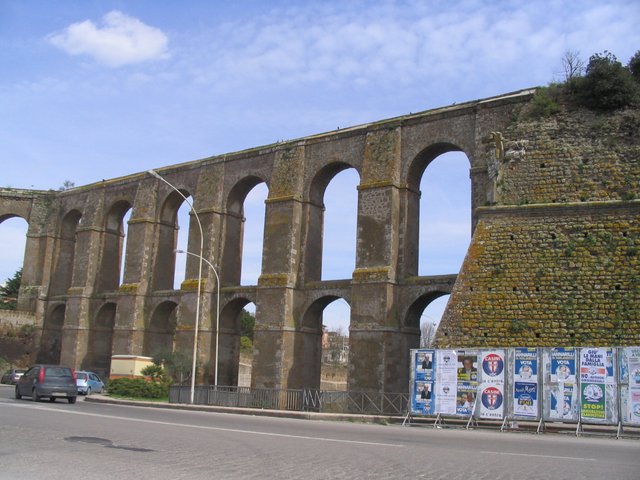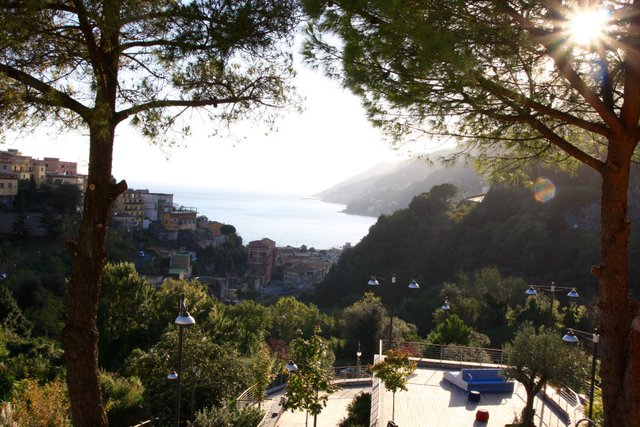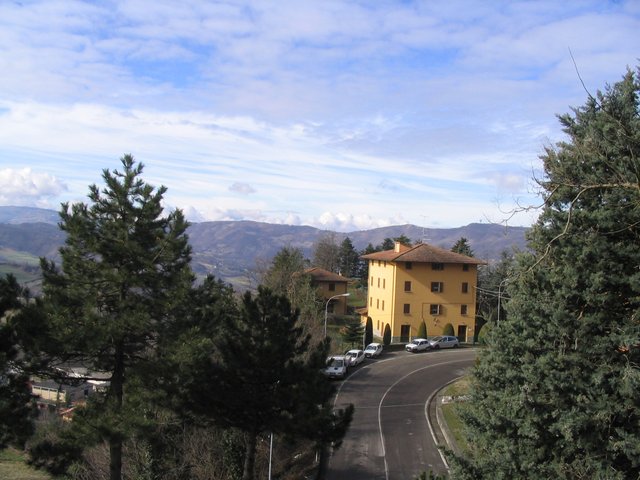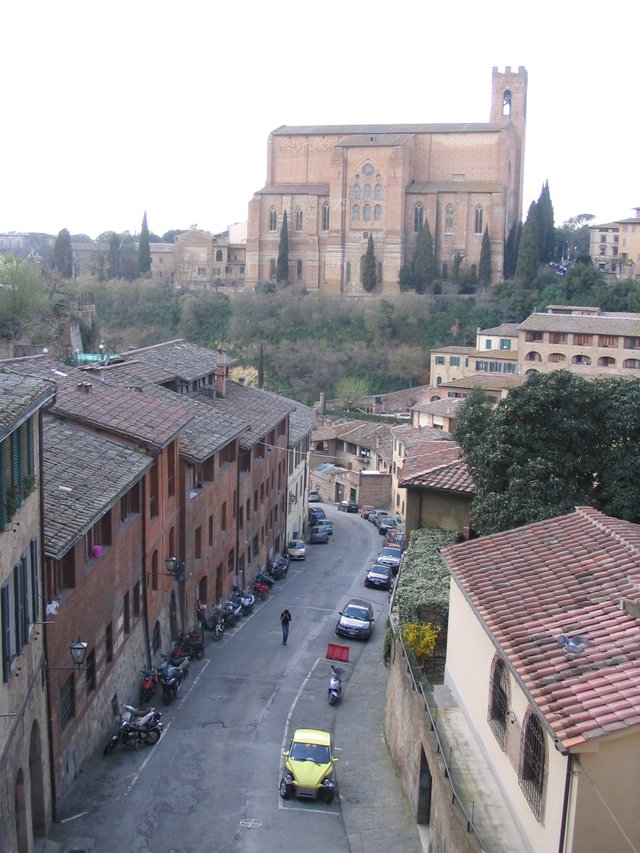Mamma Mia! The joys and perils of driving in Italy.
My knuckles were white on the steering wheel and my foot pressed down so hard on the accelerator I feared I might crash it through the floorboard of my little rented car. I had till moments before kept patiently behind a truck in the slow lane and then I rashly thought there was sufficient space in the fast lane to give me a chance to overtake.
From nowhere the first car was up against my rear bumper, and behind it the traffic piled up. My small job did not have the power to overtake and clear the way fast enough. Such was my introduction to Italy’s Autostrade.
Whoever said that every Italian who gets behind a steering wheel thinks he is Michael Schumacher and the car a Ferrari wasn’t wrong. They go at speeds on the freeways that boggle the mind. They are good drivers, let it be said. During nearly a month’s driving in the country, we saw a single serious crash. The car wrecks were lying more than a hundred metres from the road in a cornfield and there were helicopters, ambulances and emergency personnel everywhere. It was testimony to the speed at which they must have been traveling when the accident happened.
But the ideal way of touring that fascinating country in which the old sits so easily with the new remains by self-drive car. The best is to keep to the by-ways and country roads that pass through exquisite scenery and ensure you don’t miss the quaint villages and ancient towns.

A modern road passes under an ancient aqueduct.
Not that the side roads are, in driving terms, a walk in the park either. In many places they are narrow and curvy, and before you know it there is a vehicle hugging your tail, regardless of the blind corners and the fact that the road seems too narrow for the bus or truck approaching from the front to pass. The passing invariably happens, miraculously at times.
In cities and towns there are cobble-stone vias built ages ago for animal-drawn carts. They are so narrow, even a single small car can barely squeeze through.

The Amalfi Coast road can be tight, but the scenery is exquisite.
You always worry about oncoming traffic at such places in particular, but some age-old, unseen system seems invariably to kick in, one that somehow causes Italy’s drivers, including her many visitors, not to crash into each other.
I was sitting in the front seat of a city bus on the outskirts of Naples once when the system was nearly caused to fail by a motorcyclist who came screaming through the tightest of spots, causing the bus driver to slam on the brakes. A pretty girl coming down the isle to get off at the next stop shot forward and would have smashed into the windscreen had I not caught her round the waist. “Mamma mia!” she exclaimed, and I found myself holding on just a little longer than perhaps I should. How sweet to hear those words so authentically spoken.
It is the motorcyclists who, in the road-use sense, are most baffling about these people who built Rome, the vias and aqueducts, and who have given us codified law, the Vatican, Leonardo da Vinci, Michael Angelo, Pavarotti, pasta and Sophia Loren.
Mixed into their soul is, on the one hand, a quite unaffected humility. Then there is this brash aspect, best epitomised by the bikers. They travel at speeds and in circumstances that make you wonder how they manage to keep alive. The answer you find when you enter duomos, or cathedrals. In little nooks are rows of helmets with memorial candles flickering eerily beside them. Not all avoid death.
An advantage of a self-drive car is that it allows you tastes of Italian life away from the throngs of people at the normal tourists attractions.

A hamlet along a road curling along a forested mountainside.

The byways wind through pretty villages.
Passing through the Mont Blanc tunnel from Switzerland, my wife, Erika, and I looked forward to enjoying our first pasta in Italy. Driving slowly through the villages lining the Aosta Valley we saw people in overalls entering an inconspicuous building. It was lunchtime, so we parked and went inside. People who say one should seek out the eateries where ordinary Italians go are right. The pasta was exquisite, and the wine good and inexpensive.
Visa applications requiring you to give fixed addresses of where you will be staying make it difficult these days to simply drive until you find a nice place. Once when we were able to do so in-between pre-booked destinations, we found ourselves enjoying a hearty family supper of Tuscany soup and pasta with the mother and daughter running a small country hotel. It was out of season and they were not expecting guests. We helped get the hearth fire going and arrange the dining room tables. It was homely and gave us good memories.
Self-driving has its nerve-wracking moments. In Milan I tried my best to get away from the city centre and ended up right in the middle of town in a dead-end street that was so narrow the shopkeepers had to direct me as I reversed back to an intersection at which four lanes of traffic had to stop for me to get out of the way.
Another hair-raising moment came when I exited the Autostrade and the toll boom remained dead still even though I had inserted the toll slip. Within seconds cars were lined up behind me for as far as the eye could see. Some people were hooting, shouting and waving their arms. Two got out and marched my way. Miraculously the boom lifted, allowing me to be on my way. I cursed myself for not having worked harder at Latin as a student, which might have helped me understand what the road signs said.
In Umbria, high up in the mountains, is a medieval hamlet named Titignano that has been converted into a charming hostelry, with its own villa, town square, cellar and church. It is a short scenic drive away from the city of Todi, founded in the 8th century BC. A bit further away, sitting on an impregnable rock whence it once controlled the road between Florence and Rome, is Orvieto, a city founded by the Etruscans.
Once more, the joy of a self-drive car is that, having marveled for many hours at these age-old wonders of Italy, one can return to a place like Titignano and digest it all by going for a walk on its 2 000-hectare farm along the banks of the Tiber River.
I nearly lost my nerve once when staying at a quaint mountain-top guesthouse named La Ginestra on the peninsula jutting out south of Naples between the gulfs of Napoli and Salerno. The road leading up there was so narrow and curvy, and the locals so impatient, I wondered whether having to travel up and down there every day was really worth it, even considering the pleasure of watching the chef prepare your food, and waking in the morning to the bells of the Santa Maria del Castello a short distance away.
It soon changed. Within days I found myself able to negotiate the tight curves of the Amalfi Coast while enjoying the breathtaking scenery. Having got to a dead-end at the peninsula’s extreme, I contentedly hummed an old tune about the Isle of Caprice as I watched its steep rocks rise across the short stretch of sea separating it from the mainland. And back up the steep road to La Ginestra I found myself getting just a little bit impatient with the slow driving of newcomers to those parts.
I love the second pictures. Great post. Thanks for share. Follow and upvoted. Cheers
Thanks,